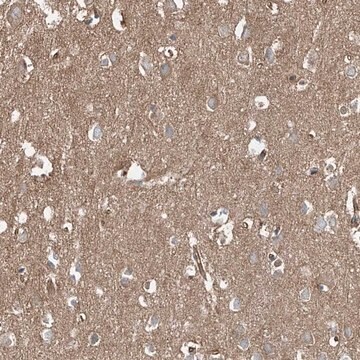RES1000A-A7
ACES
Synonyme(s) :
Acide N-(2-acétamido)-2-aminoéthanesulfonique, Acide N-(carbamoylméthyl)-2-aminoéthanesulfonique, N-(carbamoylméthyl)taurine
About This Item
Produits recommandés
Source biologique
synthetic
Forme
powder
Technique(s)
cell culture | mammalian: suitable
Impuretés
Endotoxin and microbial; tested
Plage de pH utile
6.1-7.5
pKa (25 °C)
6.8
Pf
>220 °C (dec.) (lit.)
Adéquation
suitable for manufacturing use
Activité étrangère
Cytotoxicity, DNase, NICKase, RNase, and Protease; tested
Chaîne SMILES
NC(=O)CNCCS(O)(=O)=O
InChI
1S/C4H10N2O4S/c5-4(7)3-6-1-2-11(8,9)10/h6H,1-3H2,(H2,5,7)(H,8,9,10)
Clé InChI
DBXNUXBLKRLWFA-UHFFFAOYSA-N
Vous recherchez des produits similaires ? Visite Guide de comparaison des produits
Application
Specific applications include buffers for cell culture media, protein separations and diagnostic reagent production.
Conditionnement
RES1000A-A701X: 100 gm container
RES1000A-A702X: 1 kg container
RES1000A-A704X: 10 kg container
Code de la classe de stockage
11 - Combustible Solids
Classe de danger pour l'eau (WGK)
WGK 3
Point d'éclair (°F)
Not applicable
Point d'éclair (°C)
Not applicable
Faites votre choix parmi les versions les plus récentes :
Déjà en possession de ce produit ?
Retrouvez la documentation relative aux produits que vous avez récemment achetés dans la Bibliothèque de documents.
Notre équipe de scientifiques dispose d'une expérience dans tous les secteurs de la recherche, notamment en sciences de la vie, science des matériaux, synthèse chimique, chromatographie, analyse et dans de nombreux autres domaines..
Contacter notre Service technique




